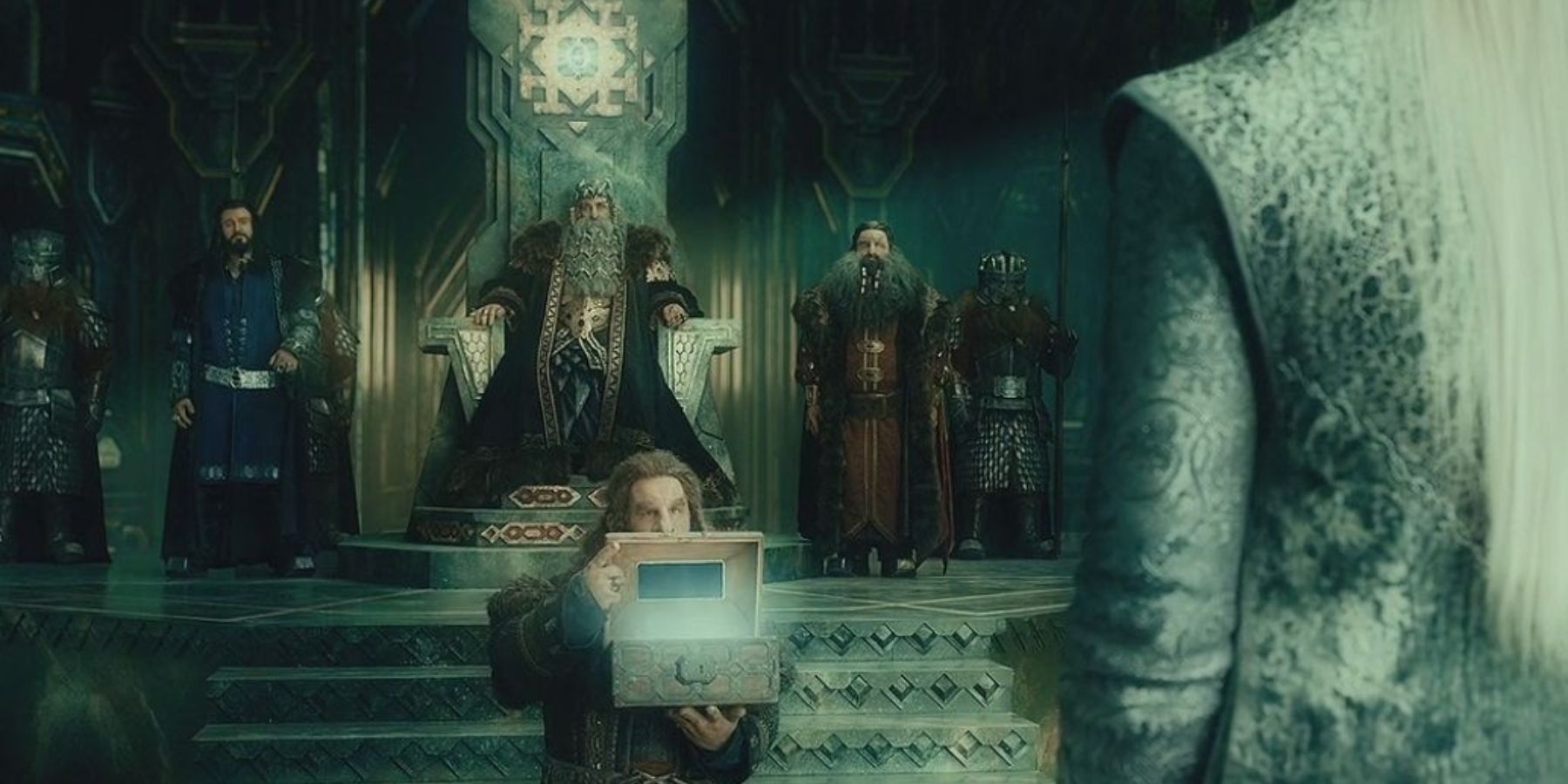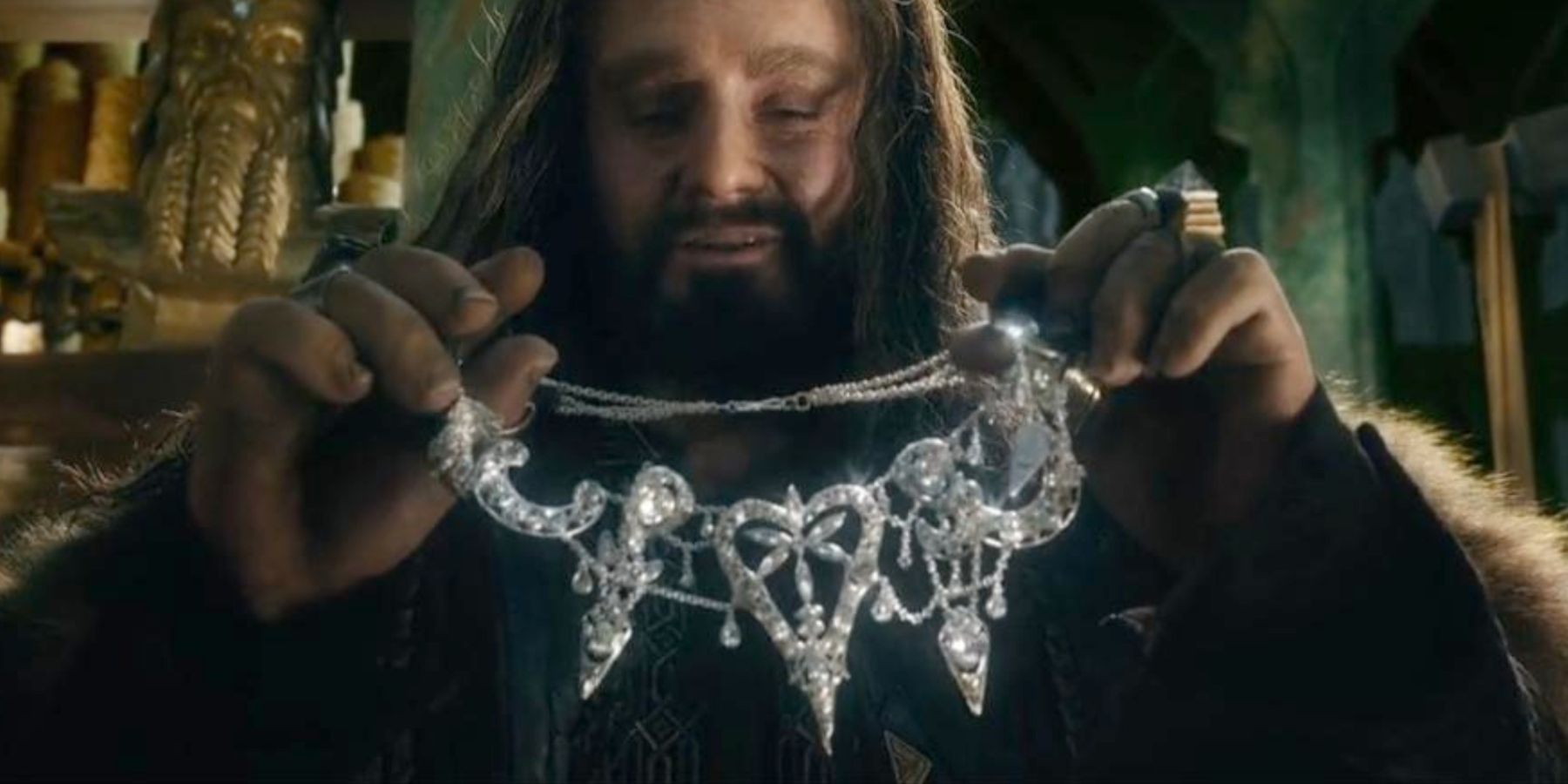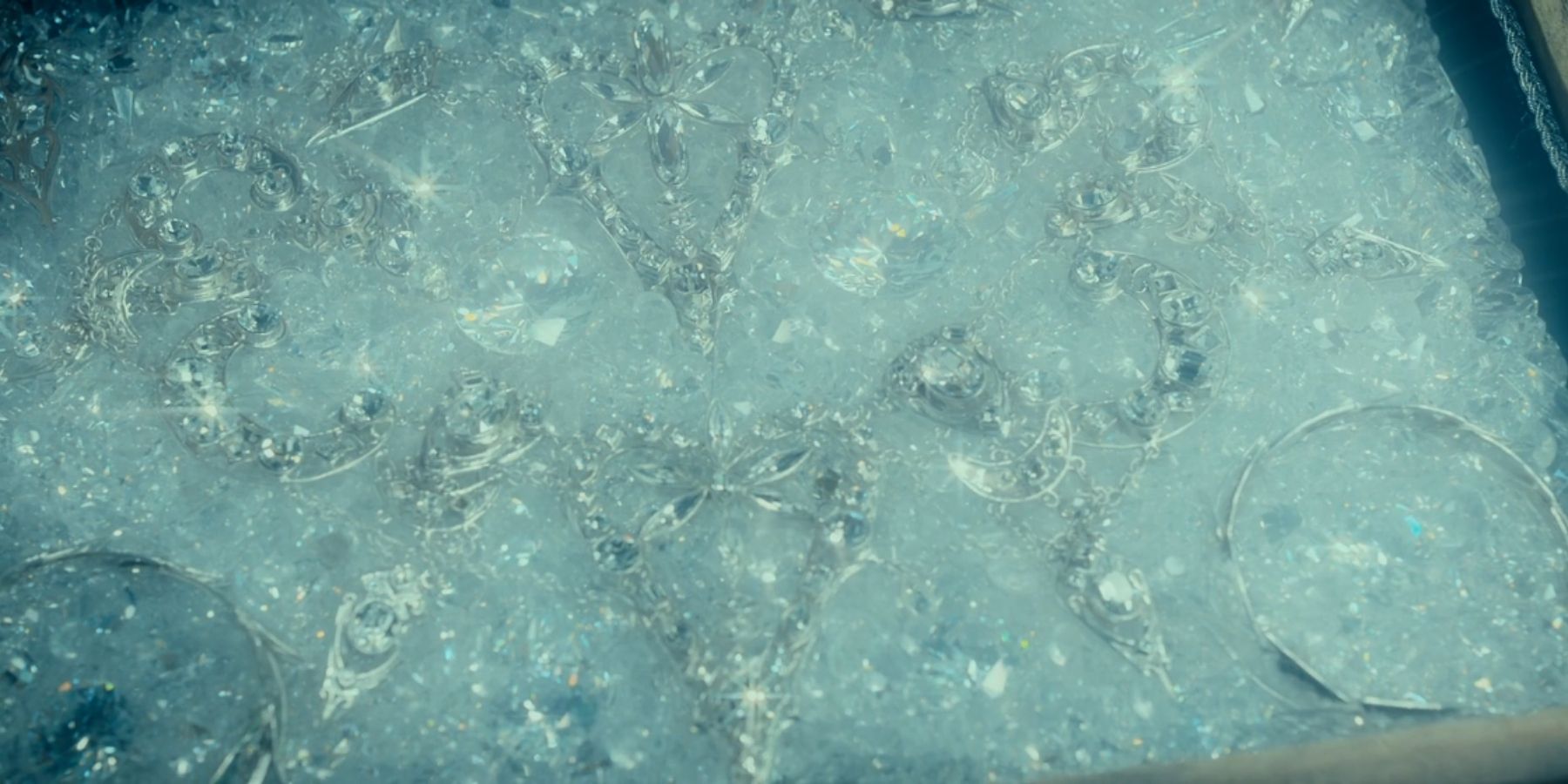There are many beautiful treasures featured in The Hobbit films, under the belly of Smaug the Dragon who has claimed his hoard, and protects it greedily under the Lonely Mountain, where the dwarven kingdom of Erebor once lay. The most well-known of these treasures is, of course, the Arkenstone.
Thror, who was Thorin Oakenshield’s grandfather, took the Arkenstone when it was discovered deep in the mines, to mean that he was King under the Mountain, and that his rule was ordained by the higher powers of the world. As is often the case with Dwarves, he became greedy, and a dragon sickness came upon him that made his miners dig too deep. This is similar to the previous dwarven settlement in Moria, which the Fellowship find to have been deserted and overrun by orcs and a Balrog, many years later.
Thror decided that all races must pay homage to him and his kin, and he put this lust for gold above his alliances, his friendships, and indeed his own honor. He requested a personal visit with Thranduil, who has long been a great and mighty king in Mirkwood, the eleven realm, and demanded that he pay tribute to the dwarves in recognition of their greatness. The scene in the film adaptation by Peter Jackson describes it that “As the great wealth of the dwarves grew, their store of good will ran thin.”
The dwarves believe the elves refuse to pay recompense and respect, and the elves say that the dwarves stole a great treasure that belonged to them. In this, they do not refer to the Arkenstone, but to the White Gems of Lasgalen, the beautiful glittering necklace depicted in the movies. But why were these particular jewels so precious, and why did they start the bad blood between Legolas and Thorin's ancestors? There are two interesting answers, and both have to do with events long before The Hobbit.
The first theory is that the White Gems are actually symbolic of the Silmarils. Any Tolkien fans who have read The Silmarillion will know that the Silmarils are 3 very rare and very powerful, and are not fit for the touch of mortal beings. They were made by Feanor, a Noldorian elf, from the magic of the two white trees of Middle Earth. They were stunning beyond belief, and held such allure that races would go to war over them. They are a pure kind of magic, as tempting as the One Ring of Power is in it’s own dark magic, and as powerful as the magic of the Palantir.
Now these gems were coveted by a powerful elven king by the name of Thingol, who demanded that the Silmaril’s be brought to him at any cost. This is how Beren, who was madly in love with Luthien, Thingol’s only daughter, ended up on a quest to retrieve a Silmaril, in exchange for permission to marry his chosen one. The quest didn’t end well for Beren, but Thingol later got his hands on a Silmaril nonetheless. So taken was he with the magnanimity of the jewels, that he took it to the best dwarven smiths in the land, and ordered them to set the stone into a necklace, so that he might wear it about his neck and be the envy of all. In fact, the light of Earendil, the phial that is gifted by Galdriel, that brave Sam uses in his battle against Shelob, is also thought to be the most beloved star because it contains remnants of a Silmaril, and proof of their undying beauty.
However, once the dwarves had finished their craftsmanship, they were so taken with the results and how beautiful the item they had made was, that they refused to return it, claiming that it was rightfully theirs because it was dwarven made. A war broke out, and Thingol was killed. Many believe that the white Gems of Lasgalen in The Hobbit films are an adaptation of this story, and of the Silmarils causing the original rift between elves and dwarves.
The other theory, which explains why the jewels are of such great importance to Thranduil himself, is that the necklace and the gems were originally given by Tharnduil to his wife, Legolas’s mother. Although she is never named in Tolkien's writings, he makes it clear that the two loved her dearly, and that she was a noble queen and a wonderful mother. It makes sense then, that as she was the only thing he ever truly loved, Thranduil would be devastated to be denied these last remnants of her heirlooms, the last sentimental possession of one whom he adored above all else.
In the end, after Thranduil finally agrees to fight in the Battle of the Five Armies, and helps the dwarves prevail against the evil that comes out of Angmar, he is given back the jewels by Bard, who has claimed them as a fourteenth share of the treasure, as was promised him by Thorin. Dain, the new King under the Mountain, and the only one left of the royal bloodline after Thorin, Fili and Kili are all killed by the enemy, takes the throne and upholds the dwarven word with loyalty and honor. The only other dwarf known to rule in such a peaceful manner with the other races of Middle Earth, and be a fair and just king is Gimli, one of the original fellowship who becomes lord of his own people in the Glittering Caves of Aglarond.






